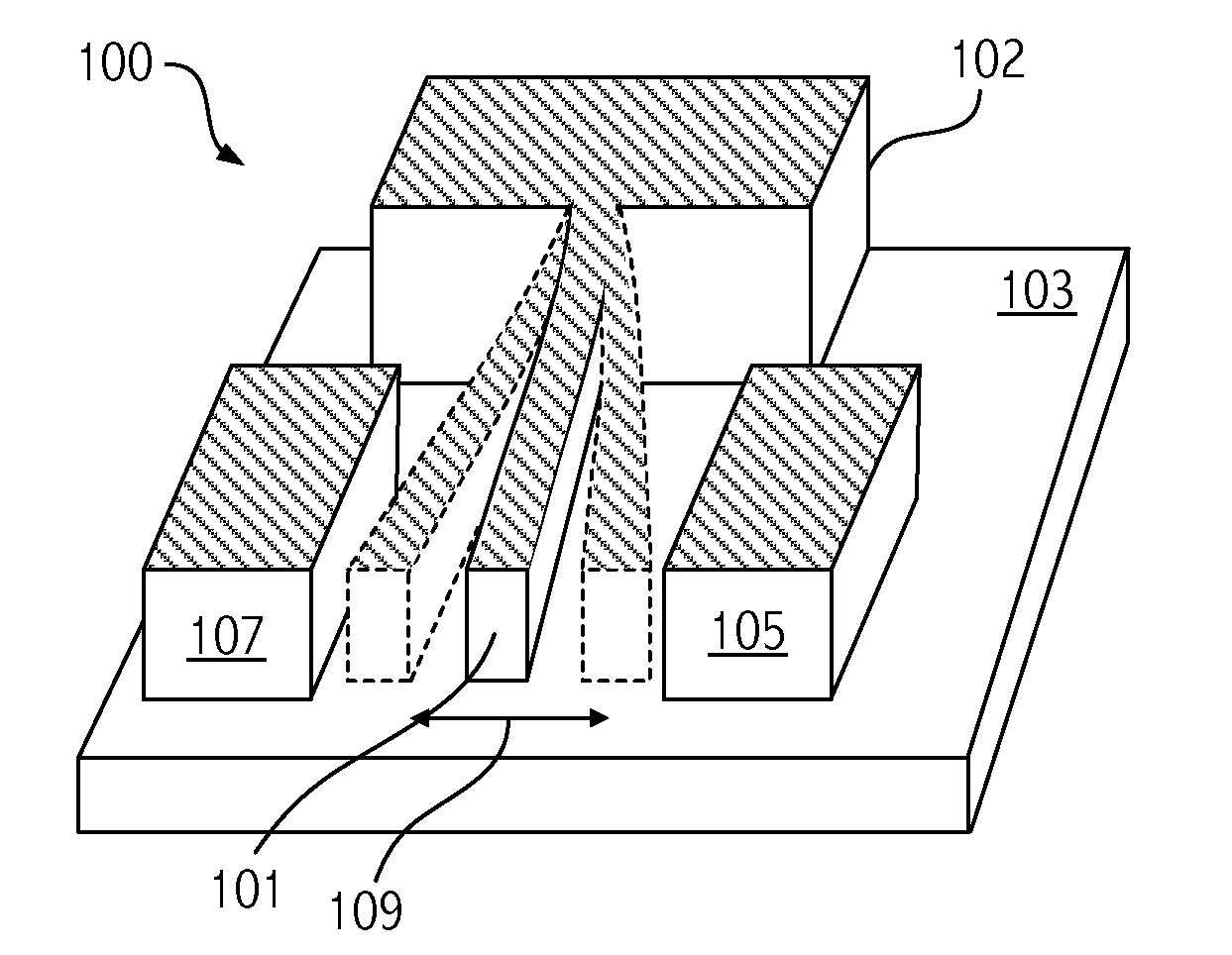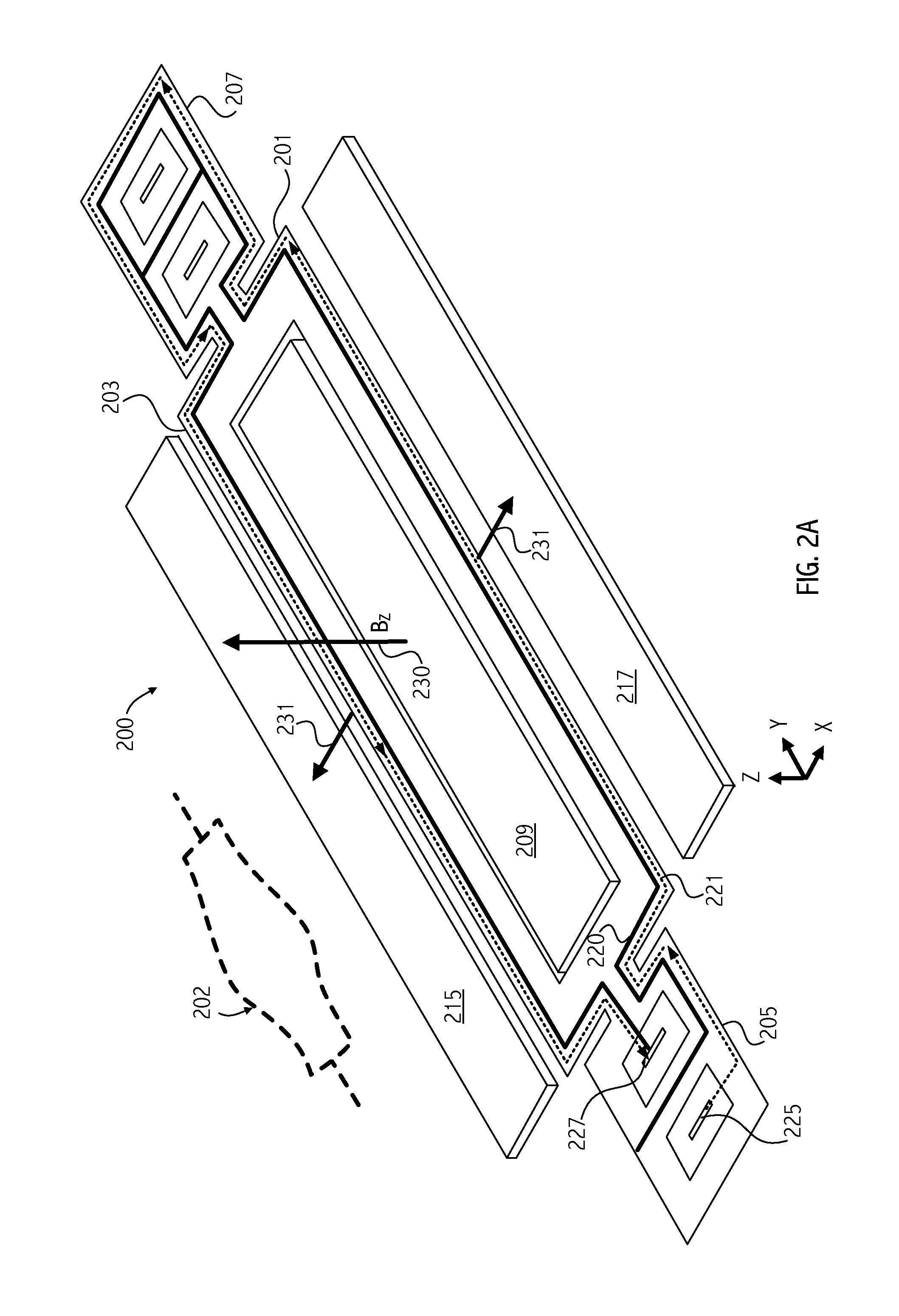MEMS-based magnetic sensor with a lorentz force actuator used as force feedback
- Summary
- Abstract
- Description
- Claims
- Application Information
AI Technical Summary
Benefits of technology
Problems solved by technology
Method used
Image
Examples
Embodiment Construction
)
[0025]Embodiments of the invention exploit Microelectromechanical Systems (MEMS) devices to sense magnetic fields. Before describing embodiments of the invention, some background information on MEMS devices is provided. “MEMS” generally refers to an apparatus incorporating some mechanical structure having dimensions, less than, e.g., approximately 100 or 200 μm. MEMS devices are commonly used for such applications as oscillators in timing applications, accelerometers, and inertial sensors, and the number of applications is growing. Certain structural components of a MEMS device are typically capable of some form of mechanical motion. The MEMS device can be formed using fabrication techniques similar to techniques used in the electronics industry such as Low Pressure Chemical Vapor Deposition, (LPCVD), Plasma Enhanced CVD (PECVD), patterning using photolithography, and Reactive Ion Etching (RIE), etc.
[0026]MEMs devices used in timing applications include a resonator. The resonator m...
PUM
 Login to View More
Login to View More Abstract
Description
Claims
Application Information
 Login to View More
Login to View More - R&D
- Intellectual Property
- Life Sciences
- Materials
- Tech Scout
- Unparalleled Data Quality
- Higher Quality Content
- 60% Fewer Hallucinations
Browse by: Latest US Patents, China's latest patents, Technical Efficacy Thesaurus, Application Domain, Technology Topic, Popular Technical Reports.
© 2025 PatSnap. All rights reserved.Legal|Privacy policy|Modern Slavery Act Transparency Statement|Sitemap|About US| Contact US: help@patsnap.com



